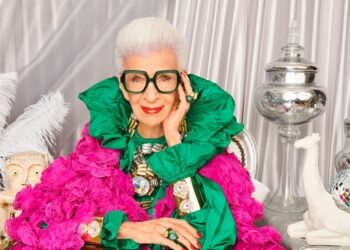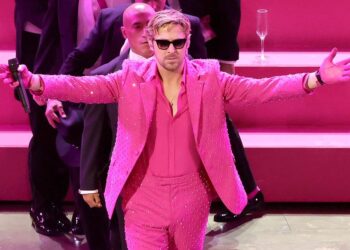Today marks the anniversary of the Kent State Massacre, one of the most prolific days in American history. It was May 4, 1970 when the American government attacked peaceful protesters leaving 4 students dead and 9 more wounded at Kent State University.
The Ohio National Guard had been called in for the student protesters. In a 13-second period the National Guardsmen fired 67 bullets at the unarmed students. Some of those shot or killed were not even protesters, they were just walking the campus or observing the rally.
Many of the students who were out protesting were fighting against the the recently announced “Cambodian Incursion” and the recent changes in the draft program. People could no longer defer their being deployed to war in Vietnam. A war that had dragged on longer than anyone expected and took the sons, father and brothers of millions of Americans from them.
The attack on the students came after a tense weekend in Kent, Ohio. On May 1st a group of about 500 students gathered in the morning and rallied in protest. Later that night there was some vandalism in the community and a large crowd gathered. It took tear gas for the police to get the situation under control.
The following day the National Guard was called in after officials and local businesses reportedly received bomb threats. There was a huge throng of protesters by the time the National Guard arrived that evening. They arrived to find the university ROTC building on fire. Again it took tear gas to disburse the crowd and many people had to be arrested. Thankfully only ONE student was inured with a bayonet.
Ohio Governor Jim Rhodes called the protesters Un-American and is quoted as saying in a press conference on Sunday, May 3, 1970:
We’ve seen here at the city of Kent especially, probably the most vicious form of campus oriented violence yet perpetrated by dissident groups. They make definite plans of burning, destroying, and throwing rocks at police, and at the National Guard and the Highway Patrol. This is when we’re going to use every part of the law enforcement agency of Ohio to drive them out of Kent. We are going to eradicate the problem. We’re not going to treat the symptoms. And these people just move from one campus to the other and terrorize the community. They’re worse than the brown shirts and the communist element and also the night riders and the vigilantes.
He continued on to liken the unarmed student protesters to soldiers saying “ They’re the worst type of people that we harbor in America. Now I want to say this. They are not going to take over [the] campus. I think that we’re up against the strongest, well-trained, militant, revolutionary group that has ever assembled in America.”
That night there was another rally and bayonets and tear gas again were used. At 11 p.m. A curfew was announced and the National Guard tried to steer the students back to their dorms.
By Monday, May 4th a perfect storm had been brewing for 3 days already and a large protest rally was planned. School officials tried to stop the rally by passing out thousands of leaflets saying the rally had been canceled. It didn’t help. Thousands of protesters still showed up. Companies A and C, 1/145th Infantry and Troop G of the 2/107th Armored Cavalry, Ohio National Guard were stationed on the campus and tried to disperse the crowds again to no avail. After tear gas didn’t help the National Guardsmen then aimed their rifles with bayonets attached at the protesters. The protesters started to retreat, the guardsmen followed.
Many of the protesters had dispersed but there were still plenty along with onlookers still there. According to eyewitness accounts, it was Sgt. Myron Pryor who first opened fire, turning his .45 pistol on the crowd after some protesters started to confront the National Guardsmen. His fire was followed by fire from at least 29 other guardsmen.
When the 13 seconds of shooting was over the United States had been changed forever. Innocent, unarmed, white students were murdered by the American government for exercising their rights of free speech and to peacefully assemble. Two of the four who were killed were indeed protesters, the other two were uninvolved students simply walking through the campus.

These weren’t the days of non stop news coverage like there is today. The photos of dead and injured students at Kent State shocked the world. It looked like we were in a civil war. America didn’t know what to think, citizens understood were were at war with the enemy in far off countries. No one could understand how unarmed students became the enemy of it’s own government.
Country wide unrest was started. College students across the U.S. protested the killings and a student strike. 450 U.S. Colleges and universities had to close down. On May 9th 100,000 people gathered in Washington, D.C. to protest the killing of unarmed protesters and the war in Vietnam. President Nixon was taken to Camp David for two days for his own safety after the protests turned violent and the angered masses took to the street smashing car windows, slashing tires and causing more bedlam.
After the massacre, a government investigation, the Presidents Commission on Campus Unrest, was launched. The commission blamed both the protesters and National Guardsmen but eventually concluded “Even if the guardsmen faced danger, it was not a danger that called for lethal force. The 61 shots by 28 guardsmen certainly cannot be justified. Apparently, no order to fire was given, and there was inadequate fire control discipline on Blanket Hill. The Kent State tragedy must mark the last time that, as a matter of course, loaded rifles are issued to guardsmen confronting student demonstrators”
Charges were filed against 25 of the protesters afterwards, 24 of them were students and one a faculty member. Of the 24 students two eventually plead guilty to the charges against them. The rest were either acquitted or charges were dismissed against them for lack of evidence.
Indictments were brought against 8 of the guardsmen but all charges were dismissed by the judge who claimed the prosecutions case was too weak to warrant a trial. A civil suit filed by the victims and their families was settled with a payment of a total of $675,000 to all plaintiffs by the State of Ohio.
The Kent State Massacre forced the National Guard to change the way it dealt with peaceful protesters from then forth. They were giving non lethal weapons such as the rubber bullets we’ve seen used in the riots in St. Louis and Baltimore.
In 1999 the university constructed an individual memorial for each of the 4 students murdered in the parking lot between Taylor and Prentice halls. Each of the four memorials is located on the exact spot where the student was killed.












